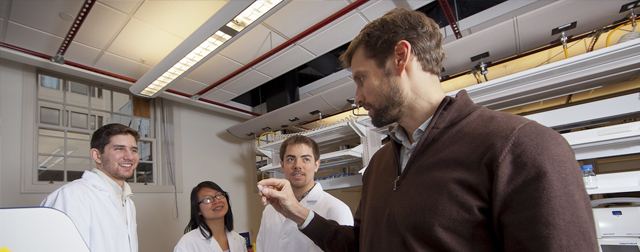Publication Date
2009
Journal or Book Title
BMC Infectious Diseases
Abstract
BACKGROUND:
The incidence of community-associated methicillin-resistant Staphylococcus aureus (MRSA) has risen dramatically in the U.S., particularly among children. Although Streptococcus pneumoniae colonization has been inversely associated with S. aureus colonization in unvaccinated children, this and other risk factors for S. aureus carriage have not been assessed following widespread use of the heptavalent pneumococcal conjugate vaccine (PCV7). Our objectives were to (1) determine the prevalence of S. aureus and MRSA colonization in young children in the context of widespread use of PCV7; and (2) examine risk factors for S. aureus colonization in the post-PCV7 era, including the absence of vaccine-type S. pneumoniae colonization.
METHODS:
Swabs of the anterior nares (S. aureus) were obtained from children enrolled in an ongoing study of nasopharyngeal pneumococcal colonization of healthy children in 8 Massachusetts communities. Children 3 months to <7 years of age seen for well child or sick visits in primary care offices from 11/03-4/04 and 10/06-4/07 were enrolled. S. aureus was identified and antibiotic susceptibility testing was performed. Epidemiologic risk factors for S. aureus colonization were collected from parent surveys and chart reviews, along with data on pneumococcal colonization. Multivariate mixed model analyses were performed to identify factors associated with S. aureus colonization.
RESULTS:
Among 1,968 children, the mean age (SD) was 2.7 (1.8) years, 32% received an antibiotic in the past 2 months, 2% were colonized with PCV7 strains and 24% were colonized with non-PCV7 strains. The prevalence of S. aureus colonization remained stable between 2003-04 and 2006-07 (14.6% vs. 14.1%), while MRSA colonization remained low (0.2% vs. 0.9%, p = 0.09). Although absence of pneumococcal colonization was not significantly associated with S. aureus colonization, age (6-11 mo vs. > or =5 yrs, OR 0.39 [95% CI 0.24-0.64]; 1-1.99 yrs vs. > or =5 yrs, OR 0.35 [0.23-0.54]; 2-2.99 yrs vs. > or =5 yrs, OR 0.45 [0.28-0.73]; 3-3.99 yrs vs. > or =5 yrs, OR 0.53 [0.33-0.86]) and recent antibiotic use were significant predictors in multivariate models.
CONCLUSION:
In Massachusetts, S. aureus and MRSA colonization remained stable from 2003-04 to 2006-07 among children <7 years despite widespread use of pneumococcal conjugate vaccine. S. aureus nasal colonization varies by age and is inversely correlated with recent antibiotic use.
DOI
10.1186/1471-2334-9-110
Volume
9
Issue
110
License
UMass Amherst Open Access Policy
Recommended Citation
Lee, Grace M.; Huang, Susan S.; Rifas-Shiman, Sheryl L.; Hinrichsen, Vriginia L.; Pelton, Stephen I.; Kleinman, Ken; Hanage, William P.; Lipsitch, Marc; McAdam, Alexander J.; and Finkelstein, Jonathan A., "Epidemiology and risk factors for Staphylococcus aureus colonization in children in the post-PCV7 era" (2009). BMC Infectious Diseases. 30.
10.1186/1471-2334-9-110
